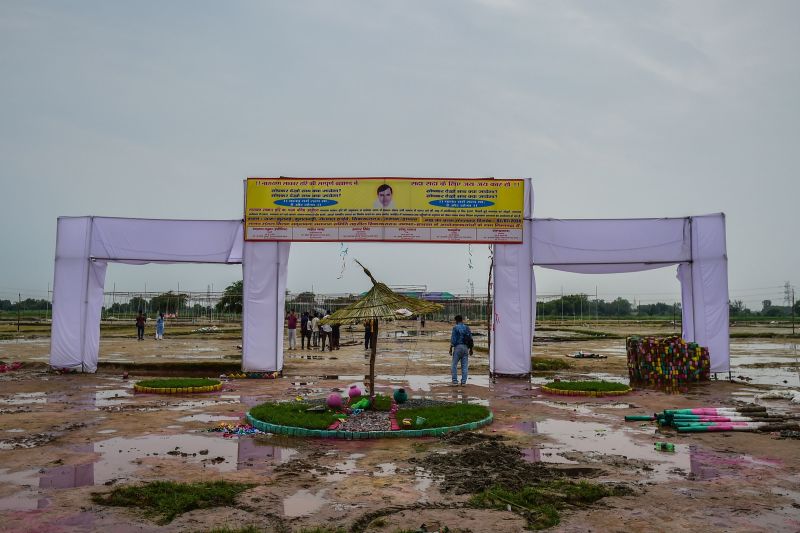As the joyous occasion of a religious festival turned to tragedy, chaos, and confusion in Northern India, local people were left to deal with the aftermath of an unimaginable disaster. A deadly crush resulted in the loss of several lives, turning a joyful public celebration into a horrifying scene of panic and despair.
The event took place during a particularly crowded religious gathering. It was just another regular day in the town until tragedy struck. Thousands of worshipers were soliciting divine intervention, seeking blessings, and donating towards social causes, the day took a bleak turn. Suddenly, a brisk push from the rear, followed by a tremor of movements, caused a flurry of fallen bodies.
Eye-witnesses recounted their experiences of the shocking incident, painting a grim picture of the chaotic scene filled with cries for help and moans of pain. Many onlookers and participants, in the midst of the swirling crowd, witnessed people fall to the ground, unable to get back up.
The scene was very disturbing, anyone who fell did not get up, said one eyewitness, reliving the dread. His words carry an undeniable weight of sorrow, reflecting the overall atmosphere that hung heavy over the scene of the incident.
Another bystander shared a chilling testimony, stating that despite desperate attempts from the crowd to maintain balance and assist those who fell, the heavy flow of the mass proved irresistible. This created a vicious cycle of fear and panic that spiraled into deadly consequences. It was as if the entire procession turned into a reluctant river, dragging the unfortunate along its strong currents, without allowing any chance of survival, they added.
Further investigations report that the core reason behind this catastrophe was severe stamping triggered due to an unexpected commotion within the crowd. This sudden unsettling caused a ripple effect as the tightly-packed mass began to move hastily, leading to a critical loss of balance and, eventually, the devastating crush. A distinctive wave of helplessness encapsulated the scene as the efforts to restore order proved futile against the relentless motion of the crowd.
Local medical professionals tirelessly worked to address the immediate needs of the individuals caught in this tragic incident. The healthcare volunteers faced enormous challenges as they dealt with the dual crisis of tending to the victims while managing distressed and anxious friends and relatives seeking their loved ones among the injured and fallen.
While the incident indeed sent shockwaves across India, it also highlighted a glaring disregard for safety standards in such significant religious gatherings, spurring discussions about crowd management, emergency medical preparations, and systematic planning.
Stories of heroism also emerged amidst the gloom, as locals became impromptu rescuers, volunteers, and guides during the tragic episode. This fatal incident evinced the strength of community and the power of unity, as locals came together to help and support each other in the face of disaster.
In a country where religious festivals often draw in colossal crowds, the chaos and confusion at the scene of the deadly crush in India serve as a painful reminder of the potential risks intertwined with mass gatherings. These tragic incidents underscore the urgent need to address the safety and preparedness of such events, whilst providing valuable lessons on crowd management, disaster prevention, and mitigating chaos during such unfortunate events.




